Samuel Kessler was born to Tsvi (Hirsch) and Hudi (Judith) Kessler in Austria/Poland in August of 1864. The name Kessler derives from Kistler. A Kistler was a seller of copper pots and pans. We do not know much, if anything, about his early life. His given name was probably Schulem based on the birth certificate of his first child born in the United States.
In 1886, he married Bertha (Chaya Breindel) Charipper in Austria/Poland. Samuel and Bertha had at least one child, Lippman, in 1887, before immigrating to the US. According to his grandson, George, Samuel worked as a bootblack for Emperor Franz Joseph, who was emperor of Austria-Hungary from 1848 – 1916. That means Samuel polished boots and shoes.
Samuel arrived in New York around 1894. Did he come with Bertha and Lippman, or did they follow at a later date? We have yet to learn that.
Upon arriving in the United States, he settled on the Lower East Side of Manhattan. This was a highly dense area of immigrants. In 1896, the area was so packed with immigrants, that a terrible heat lasting for over 10 days killed almost 1500 people.
When his son Abe was born, he was living at 167 Allen Street on the Lower East Side.
One year later, his daughter, Edith, was born. Then in 1899, his wife, Bertha, gave birth to twin boys, Benjamin and Israel, both of whom died before 2 years of age.
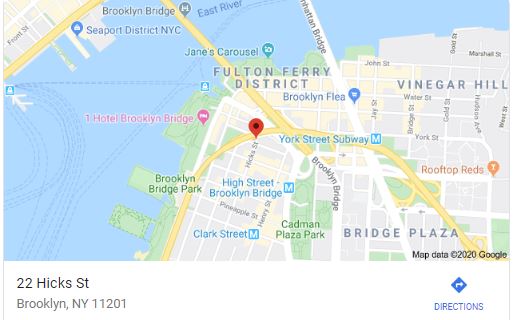
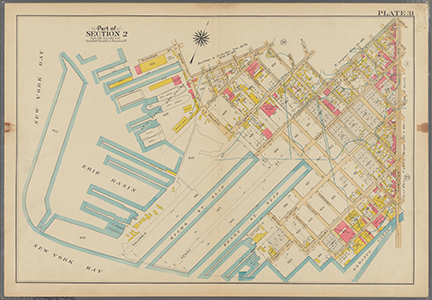

In 1900, Sam and his family lived at 22 Hicks Street in Brooklyn, NY. It was there he applied for his naturalization papers which were finalized in 1902. They were still living on Hicks Street in 1905. It was here that his son, Morris, was born. Also, before Morris, Sam and Bertha had 3 other sons, twins Benjamin and Israel, and Frederick all of whom died before their second birthdays.
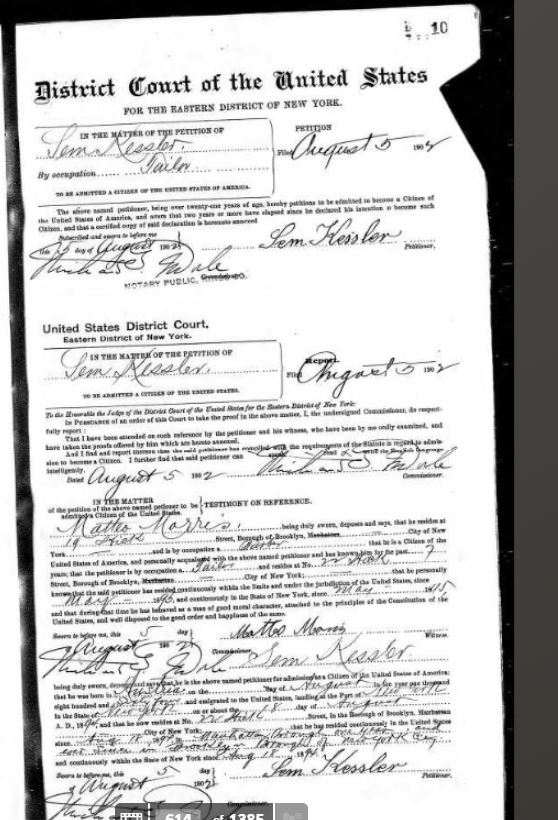
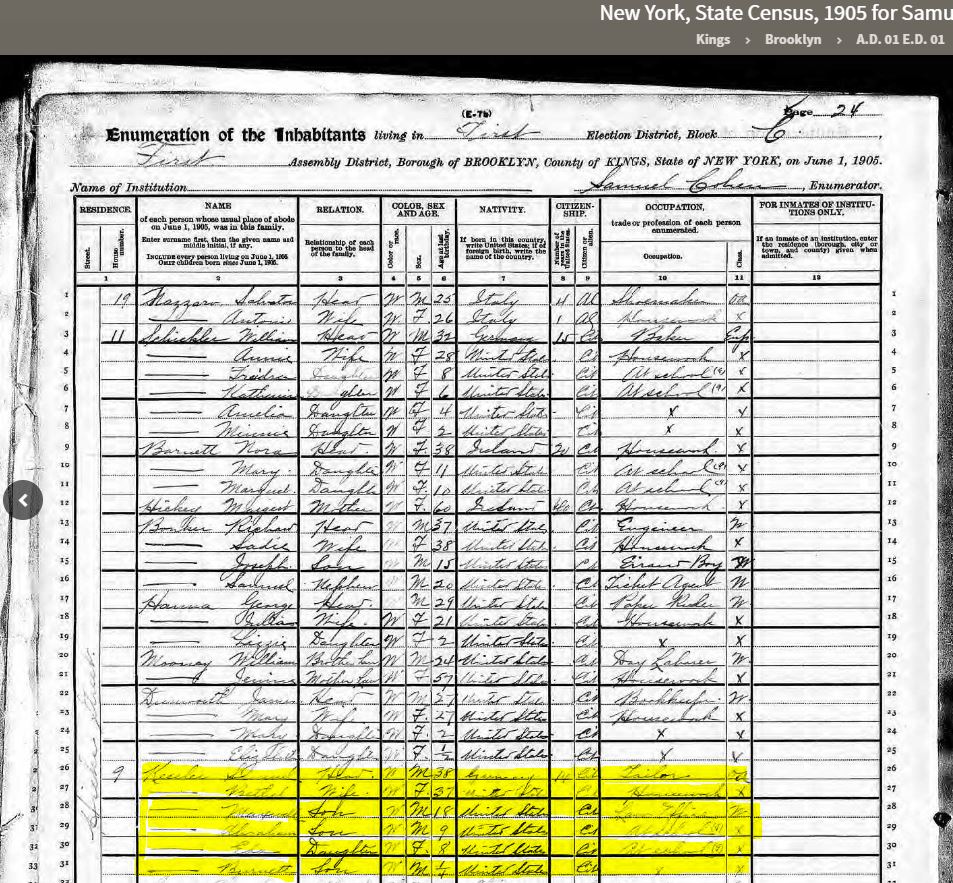
Hicks Street, named after 17th century ferry operators, John and Jacob Hicks, is in Brooklyn Heights. Today it is known as an affluent residential area. Originally is was called Brooklyn Village and was known for its brownstone row houses. This area began to develop when Robert Fulton’s New York and Brooklyn Steam Ferry Boat Company began regularly scheduled ferry service in 1814. When the Brooklyn Bridge was completed in 1883, this opened up the area to even more development. Mansions were divided into apartment houses and boarding houses.
In 1907, he bought a house which was put in his wife’s Bertha’s name. It was a row house at 1107 Herkimer Street. The new home was a cold-water flat, typical of the day. That means it had no running hot water for cooking or baths.
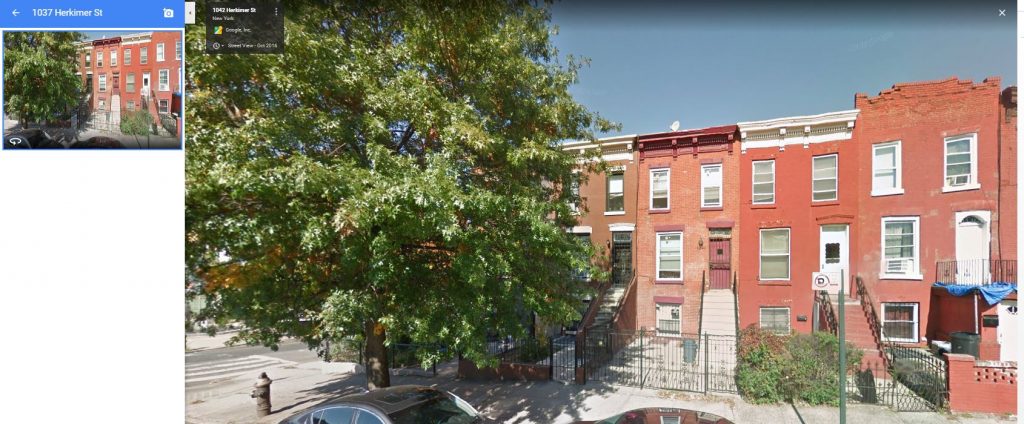
Herkimer Street is in the Bedford Stuyvesant section of Brooklyn. After 1907, with the completion of the Williamsburg Bridge, Jews and Italians settled in this area. It was known as a working-class to middle class neighborhood where people worked in downtown Brooklyn and in Manhattan. The homes were mainly Brownstone row houses.
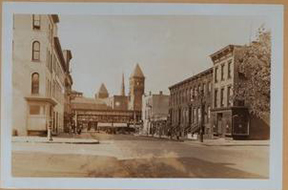
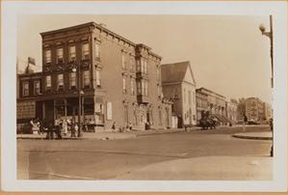
In 1908, an unspeakable tragedy struck his household. His oldest son, Lippman, now about 20 years old, shot himself to death in a murder suicide.
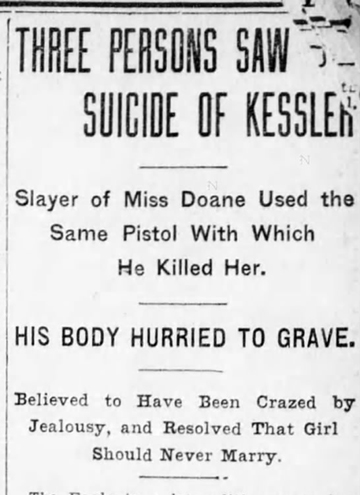
The 1910 census showed that Samuel took in borders, named Annie and James Kenny, probably to help pay the mortgage. He also had his own business as a merchant tailor. A merchant tailor is a tailor who owns the business and supplies the fabric he uses to his customers.

He was active in his synagogue and became the president. The Schul was within walking distance from his Herkimer Street home. When he walked there, he always wore his usual top hat. In winter, the neighborhood boys would try to throw snowballs at it to try to knock it off of his head.
In 1917, his son Abe married Anna Feldman who was seven months pregnant. Would this bring more shame to the family? Maybe because of that, Abe and Anna gave the baby up for adoption.
It appears that Samuel and his wife did not complete the 1920 Census. However, he appears on the registered voter list in 1924. His daughter, Edith, now married, and her husband, Morris, were living down the street from him and were also registered voters.
By the 1925 Census, only his son, Morris, and his wife Bertha lived in the house with him.
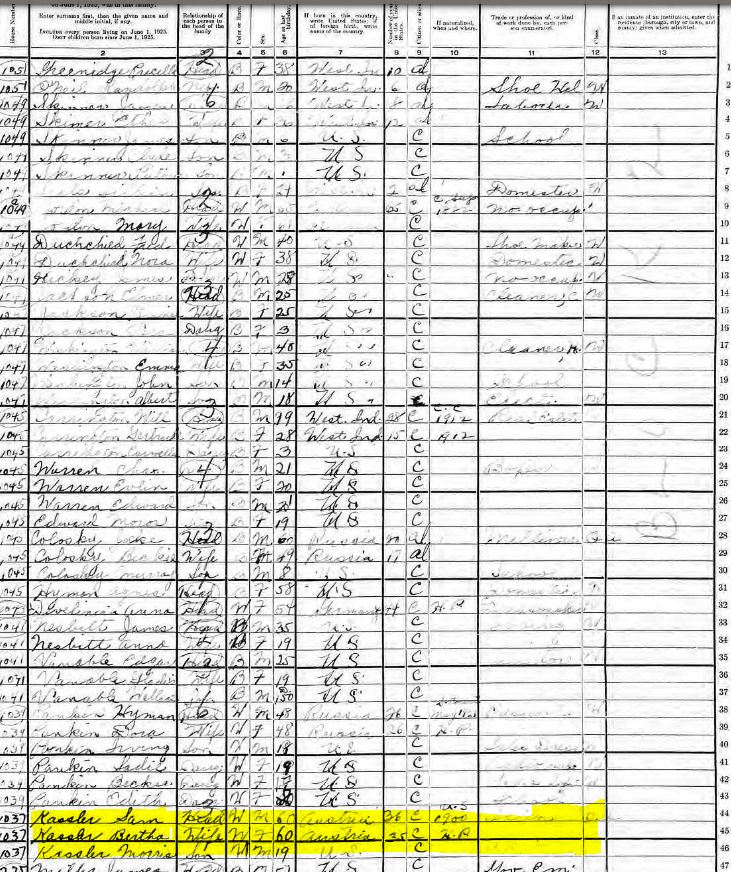
By 1930, the home was valued at $7000, but he did not own a radio. Samuel was now 64 years old and retired. After 1930, the Bedford-Stuyvesant neighborhood of Brooklyn became home to a large African American population.

Sam and Bertha had 8 children with only 3, Abe, Morris and Edith, surviving to adulthood.
Samuel died at age 66 from pneumonia on February 27, 1932, and is buried in Mt. Zion Cemetery in Queens, NY. His grave is located in the Linenthal Society Section (MICHAEL LINENTHAL LODGE), Path 32 R, Gate Road, Grave 0003, Map 314.
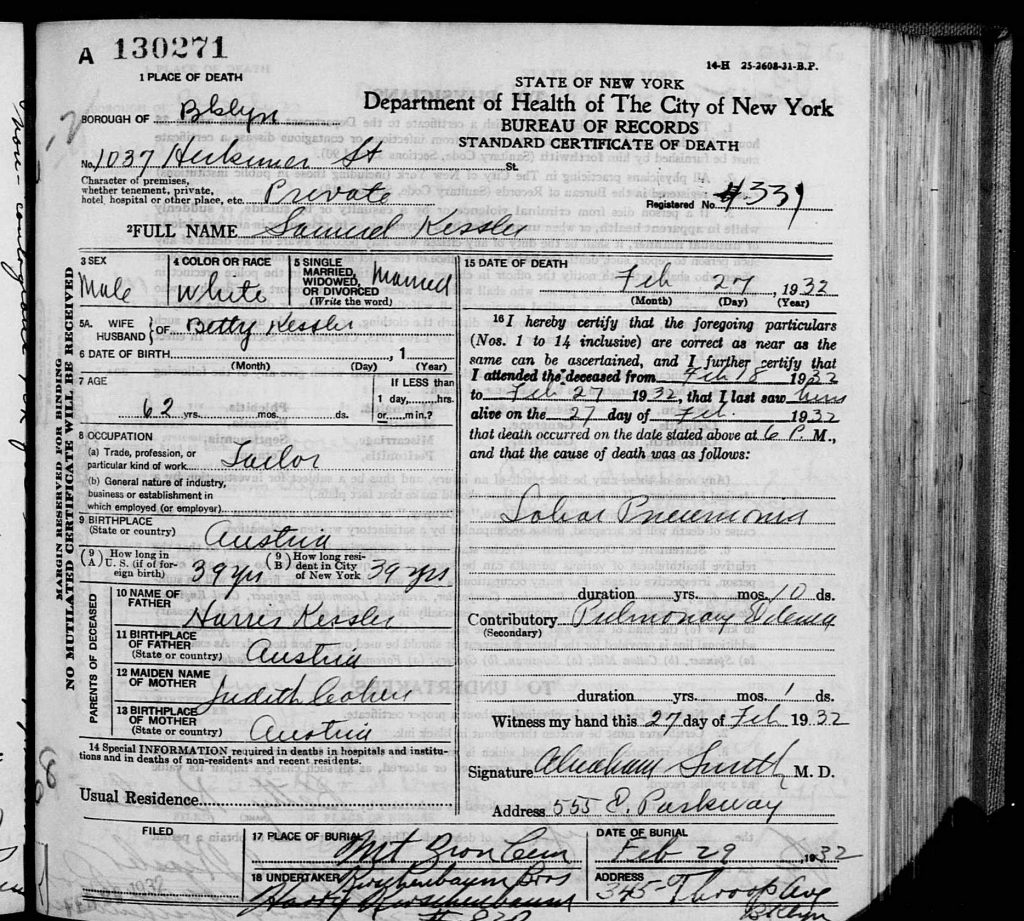
His tombstone is inscribed with Samuel: “[abbreviation] Here lies buried/ our dear father/ Shalom son of Mr. Tzvi/ died 22 Adar I 5692/ [abbreviation] May his soul be bound in the bond of life.”
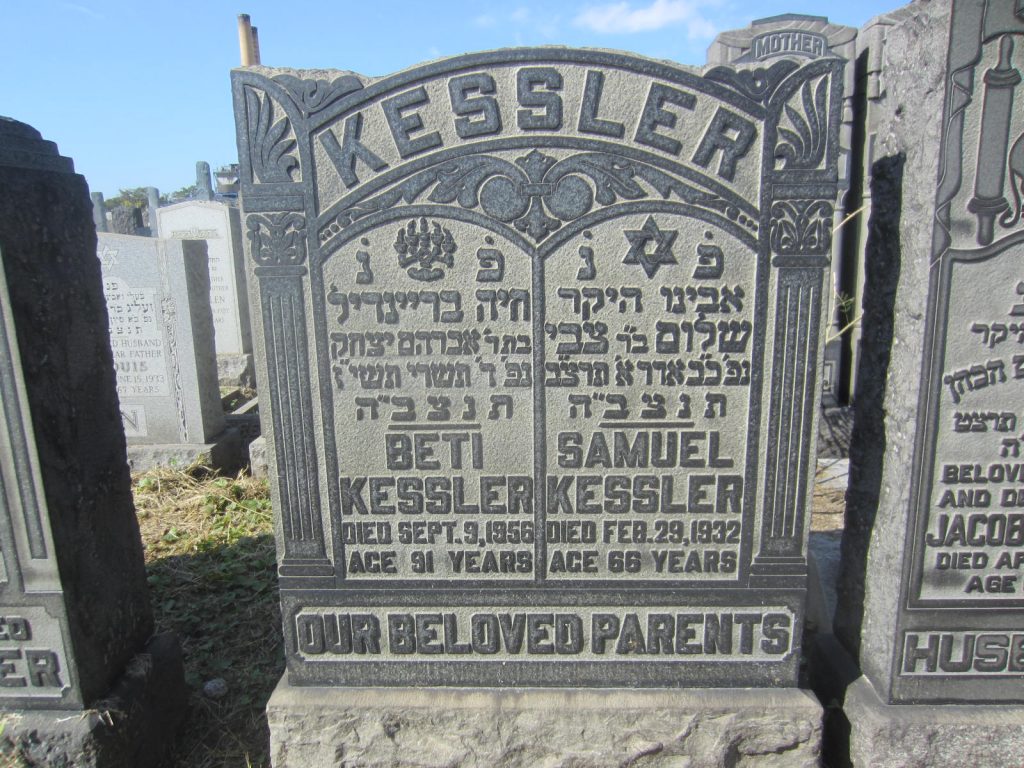
Sources:
Stories from Stuart and George Kessler, Art Cronson
- Hicks Street
- Google Maps
- Herkimer Street
- http://www.mountzioncemetery.com/societies.asp
- Note: The Linenthal Society at Mt. Zion is from a Jewish community organization rather than a Landmanshatften group which is people from a specific area of the Old World. https://jgsny.org/searchable-databases/indexes-to-jewish-organizations/jewish-communal-register
- https://www.merriam-webster.com/dictionary/merchant%20tailor
- The Heat Wave of 1896 And The Rise Of Roosevelt https://www.npr.org/templates/story/story.php?storyId=129127924
- Bootblack https://en.wiktionary.org/wiki/bootblack
- Franz Joseph https://en.wikipedia.org/wiki/Franz_Joseph_I_of_Austria
- Census Records from Ancestry.com
